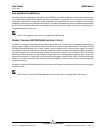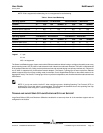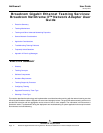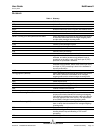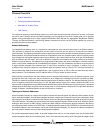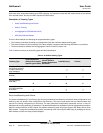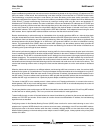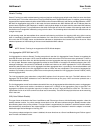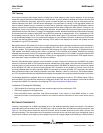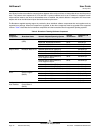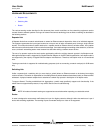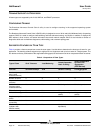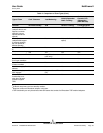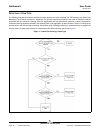
User Guide NetXtreme II
January 2010
Broadcom Corporation
Document ENGSRVT52-CDUM100-R Executive Summary Page 19
Smart Load Balancing enables both transmit and receive load balancing based on the Layer 3/Layer 4 IP address and TCP/
UDP port number. In other words, the load balancing is not done at a byte or frame level but on a TCP/UDP session basis.
This methodology is required to maintain in-order delivery of frames that belong to the same socket conversation. Load
balancing is supported on 2 to 8 ports. These ports can include any combination of add-in adapters and LAN on Motherboard
(LOM) devices. Transmit load balancing is achieved by creating a hashing table using the source and destination IP
addresses and TCP/UDP port numbers.The same combination of source and destination IP addresses and TCP/UDP port
numbers will generally yield the same hash index and therefore point to the same port in the team. When a port is selected
to carry all the frames of a given socket, the unique MAC address of the physical adapter is included in the frame, and not
the team MAC address. This is required to comply with the IEEE 802.3 standard. If two adapters transmit using the same
MAC address, then a duplicate MAC address situation would occur that the switch could not handle.
Receive load balancing is achieved through an intermediate driver by sending gratuitous ARPs on a client-by-client basis
using the unicast address of each client as the destination address of the ARP request (also known as a directed ARP). This
is considered client load balancing and not traffic load balancing. When the intermediate driver detects a significant load
imbalance between the physical adapters in an SLB team, it will generate G-ARPs in an effort to redistribute incoming
frames. The intermediate driver (BASP) does not answer ARP requests; only the software protocol stack provides the
required ARP Reply. It is important to understand that receive load balancing is a function of the number of clients that are
connecting to the system through the team interface.
SLB receive load balancing attempts to load balance incoming traffic for client machines across physical ports in the team.
It uses a modified gratuitous ARP to advertise a different MAC address for the team IP Address in the sender physical and
protocol address. This G-ARP is unicast with the MAC and IP Address of a client machine in the target physical and protocol
address respectively. This causes the target client to update its ARP cache with a new MAC address map to the team IP
address. G-ARPs are not broadcast because this would cause all clients to send their traffic to the same port. As a result,
the benefits achieved through client load balancing would be eliminated, and could cause out-of-order frame delivery. This
receive load balancing scheme works as long as all clients and the teamed system are on the same subnet or broadcast
domain.
When the clients and the system are on different subnets, and incoming traffic has to traverse a router, the received traffic
destined for the system is not load balanced. The physical adapter that the intermediate driver has selected to carry the IP
flow carries all of the traffic. When the router sends a frame to the team IP address, it broadcasts an ARP request (if not in
the ARP cache). The server software stack generates an ARP reply with the team MAC address, but the intermediate driver
modifies the ARP reply and sends it over a particular physical adapter, establishing the flow for that session.
The reason is that ARP is not a routable protocol. It does not have an IP header and therefore, is not sent to the router or
default gateway. ARP is only a local subnet protocol. In addition, since the G-ARP is not a broadcast packet, the router will
not process it and will not update its own ARP cache.
The only way that the router would process an ARP that is intended for another network device is if it has Proxy ARP enabled
and the host has no default gateway. This is very rare and not recommended for most applications.
Transmit traffic through a router will be load balanced as transmit load balancing is based on the source and destination IP
address and TCP/UDP port number. Since routers do not alter the source and destination IP address, the load balancing
algorithm works as intended.
Configuring routers for Hot Standby Routing Protocol (HSRP) does not allow for receive load balancing to occur in the
adapter team. In general, HSRP allows for two routers to act as one router, advertising a virtual IP and virtual MAC address.
One physical router is the active interface while the other is standby. Although HSRP can also load share nodes (using
different default gateways on the host nodes) across multiple routers in HSRP groups, it always points to the primary MAC
address of the team.



